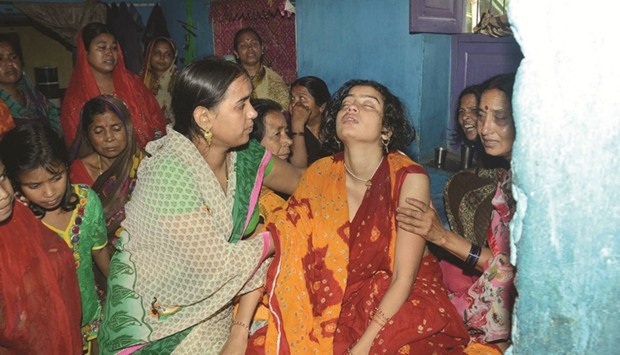Sher Mohamed, a trooper of Central Reserve Police Force injured in Monday’s attack in Sukma district of Chhattisgarh state, said around 300 fighters attacked the troops as they provided security for the construction of a new road opposed by the Maoists.
“The Naxalites (Maoists) first sent villagers to track our location. Then we saw 100-150 villagers approaching us. They were not armed. How could we fire at them?” said Mohamed, who was part of the 99-member commando team.
“There must have been 300 Naxalites, all in black uniform. They started firing indiscriminately at us. They had rocket launchers, AK-47s,” he told reporters from his hospital bed.
Home Minister Rajnath Singh called the attack an “act of desperation” by the Maoists, who have long dominated thousands of square miles of central and eastern India.
“We will not let them (Maoists) succeed. The sacrifice of our brave soldiers will not go in vain. We have accepted it as a challenge,” Singh said.
“We will review the strategy to combat LWE (left-wing extremism) and, if required, we will revise it,” Singh said, adding a top-level security meeting was fixed for May 8.
However conflict expert Ajit Kumar Singh said the attack, which came just a month after a deadly ambush in the same location, was the result of a military intelligence failure.
“How come the movement of some 300 heavily armed people in a densely forested area went unnoticed? What are your intelligence operatives doing?” said Singh, a research fellow with the Delhi-based Institute of Conflict Management.
“Everyone knows there is danger all the time but the specific input was missing.”
Maoists claim to be fighting for the land rights of marginalised tribal communities.
Their insurgency has claimed around 10,000 lives since it started in the 1960s, and is considered India’s most serious internal security threat. While operating from their jungle bases, the Maoists often descend on villages to demand protection money and recruit young men and women to their ranks.
They also oppose efforts to build new roads and infrastructure in remote areas because it undermines their long-running campaign against India’s security forces.
Since his election in 2014, Prime Minister Narendra Modi has been seeking to stem the insurgency by earmarking development funds for revolt-hit areas and improving policing.
Singh said the movement had been weakened considerably by the government’s initiatives.
“They have been feeling cornered,” he said.
“When any militant outfit is in a desperate situation, they try to stage spectacular attacks to gain back prominence. And this is exactly what the Maoists have done this time.”
Chattisgarh Chief Minister Raman Singh said the fight against Maoists would
continue with “more vigour”.
“The fight against Maoists in Sukma is the biggest operation against LWE in the country. We have decided to enhance our activities and construction work in the region,” he said.
But senior Congress leader Digvijaya Singh stirred a controversy by reiterating that Raman Singh and the ruling Bharatiya Janata Party had a “deal and understanding” with the Maoists in the state.
He called for talks with all stakeholders to bring Maoist violence under control.
“Chief Minister Raman Singh ji and the BJP win elections from there because they had a deal and understanding with the Maoists. I have said this before, and I am stating it again,” he told reporters.
Digvijaya Singh said unless the state’s tribal villagers are taken into confidence, Maoist violence cannot be brought under control.

